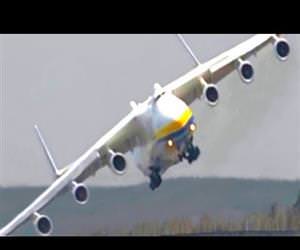

Why not keep the cabin at 14.7 psi to simulate sea-level pressure and maximize comfort? The aircraft must be designed to withstand differential pressure, that’s the difference between the air pressure inside and outside the aircraft. Exterior and interior altitude profile on a typical flight. On a typical flight, as the aircraft climbs to 36,000 feet, the interior of the plane “climbs” to between 6000-8000 feet. Pressurization systems are designed to keep the interior cabin pressure between 12 and 11 psi at cruise altitude. The air inside the airplane is completely changed every two or three minutes making it far cleaner than the air in your home or office. One of the benefits of a pressurization system is the constant flow of clean, fresh air moving through the aircraft. It’s one of the simplest systems on an aircraft. To reduce cabin pressure, the door slowly opens, allowing more air to escape. If higher pressure is needed inside the cabin, the door closes. The valves are automatically controlled by the aircraft’s pressurization system. Larger aircraft often have two outflow valves. It’s about the size of a briefcase and located on the side or bottom of the fuselage. To control the interior pressure, and allow old, stinky air to exit, there is a motorized door called an outflow valve located near the tail of the aircraft. To solve the problems, pressurization systems constantly pump fresh, outside air into the fuselage. A fuselage is a bit like a soda bottle with a hole in the back. And just imagine the smell inside a perfectly sealed tube on a long flight! Clearly, a big sealed soda bottle won’t work for us without some modification. Even if we could, the passengers would quickly use up the available oxygen.

We can’t do that because it’s hard to perfectly seal a huge airplane fuselage. In theory, we could seal the bottle so, as the airplane climbs, the interior air pressure would stay the same. The airplane body (fuselage) is a long tube capable of withstanding a fair amount of differential air pressure think of it like a big plastic soda bottle. If you want a fast, smooth ride in a fuel efficient airplane that can fly over a mountain range, we need to pressurize! How does a pressurization system work? Aircraft ground speeds are slower at lower altitudes.Turbofan engines are very inefficient down low.Most bad weather is at lower altitudes.It’s tough to cross a 14,000 foot mountain range at 10,000 ft.Why bother with pressurization? Why not fly down low?Īirplanes can certainly fly below 10,000 feet where the atmospheric pressure is a comfy 10 psi or higher, but it has some drawbacks: The solution is to pump air into the airplane so the interior pressure is high enough to keep the humans happy. To survive high altitudes, occupants of an aircraft need help breathing.

If you tried breathing at that altitude, your useful consciousness would be less than a minute (followed soon after by death). At those altitudes the atmosphere provides less than 4 psi of pressure. At this pressure, a healthy adult has only 20-30 minutes of useful consciousness.Īirliners fly between 30,000 and 43,000 feet. There just isn’t enough oxygen in a breath of air to adequately supply the brain. Climbing to a higher altitude, though, and the pressure drops really fast.Īt 18,000 feet, the atmospheric pressure is down to 7.3 psi, about half the sea-level pressure. Folks living in Denver, Colorado (5600 ft) are quite happy breathing the lower, 12 psi atmosphere. When we breathe, our lungs take in less air, and less oxygen. Going higher spells trouble.Īs we climb higher, air molecules are spread farther apart. Although the atmosphere is 300 miles thick, most of the air molecules are squashed down to within a few thousand feet of the earth’s surface. You notice the decrease when your ears pop while driving up a mountain or riding a fast elevator. I’ll bet you don’t even notice! For animals roaming the earth’s surface, a 14.7 psi atmosphere provides the perfect amount of oxygen.Īs we climb in altitude, the amount of air pressure acting on us decreases rapidly. At sea level, our bodies are subjected to about 14.7 pounds of pressure from this tall column of air. Hypothetical experiment: If you place a scale in a vacuum chamber and compare the weight of a filled balloon with an empty one, you’ll see that air has mass.Įarth’s atmosphere is about 300 miles thick. The aircraft’s pressurization system makes it possible. We hop on-board a comfy airliner and fly high in the stratosphere without giving breathing a second thought.


 0 kommentar(er)
0 kommentar(er)
